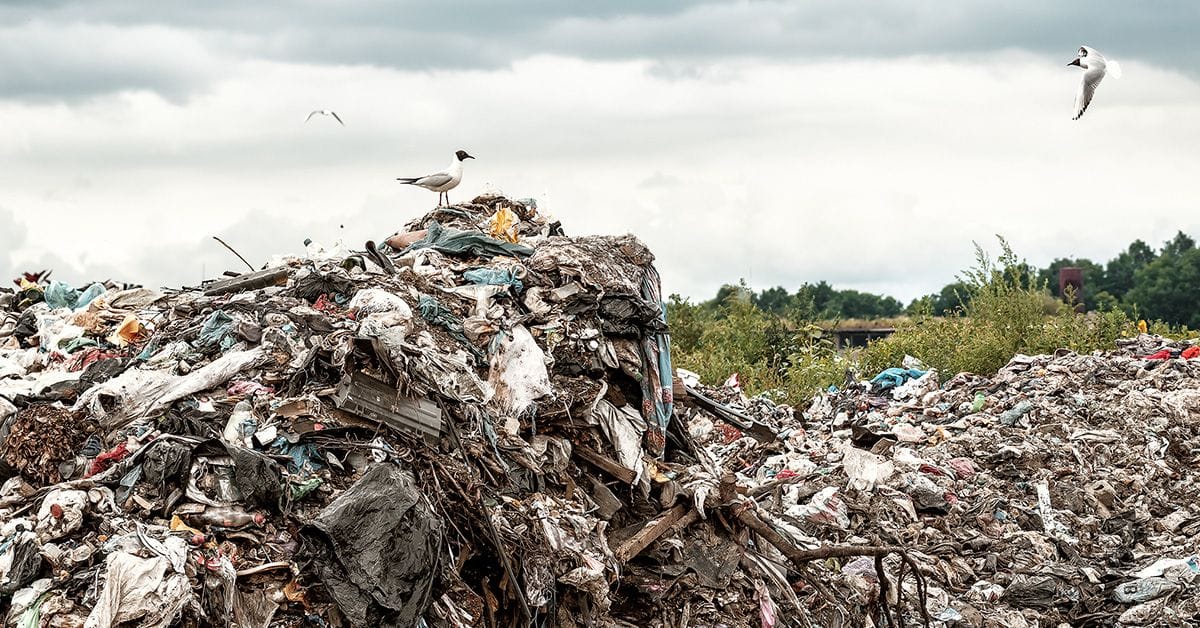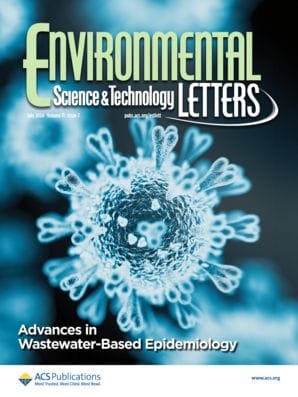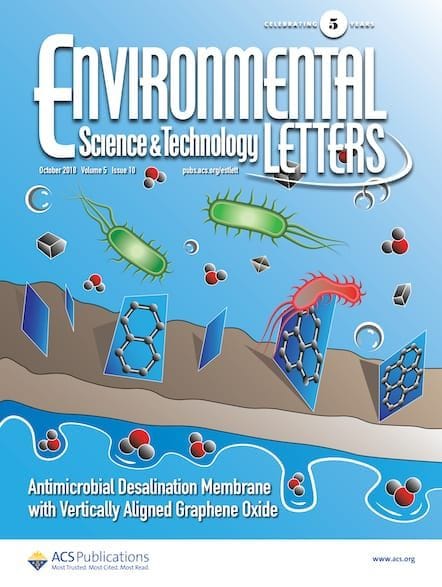Particularly in hot weather, ammonia and sulfides from rotting landfill waste can get right up your nose. But the fate of other emissions from landfill is not well understood—particularly for volatile forever chemicals.

Perfluoroalkyl and polyfluoroalkyl substances (PFAS) are a continuing problem for our planet. As previously reported, this class of more than 9,000 anthropogenic chemicals is highly persistent in the environment and can travel long distances with ease. Landfills receive more than half of the municipal solid waste generated in the United States—and inevitably, these sites are full of discarded PFAS, which can leach into waterways. In 2013, the mass of PFAS leached to wastewater treatment plants was estimated at 563–638 kg nationally.1 But it looks like that’s not the only route out; in fact, it is likely that PFAS are also being "belched" into the air with other landfill gases.
To test the idea and compare the two pathways, researchers in the United States studied three municipal solid waste landfills in Florida, measuring volatile PFAS in landfill gas and non- or semi-volatile PFAS in landfill leachate. A key challenge in this work is that landfill gas is typically 40–60% methane, which is well above the upper explosive limit of 17%, necessitating specialist explosion-proof equipment or other novel methods for gas collection.
The researchers developed a sophisticated method to capture and analyze 13 volatile PFAS in the landfill gases using high-volume sampling and advanced chromatography techniques. The results were startling: some fluorotelomer alcohol (FTOH) levels were up to two orders of magnitude higher than those previously reported in other studies.3 These findings, reported in Environmental Science & Technology Letters, suggest that the air pathway is just as significant, if not more so, than the liquid pathways previously emphasized in environmental management strategies. Once launched into the air, these chemicals can travel thousands of miles to some of our most pristine landscapes, where their bioaccumulative and toxic effects wreak havoc.

Landfill Gas: A Major Pathway for Neutral Per- and Polyfluoroalkyl Substance (PFAS) Release
DOI: 10.1021/acs.estlett.4c00364
To further understand the dynamics at play, other groups have looked at how PFAS are transformed during their time in the landfill by comparing “fresh” leachates from waste collection vehicles to more aged landfill leachate at the disposal facility.4 The findings suggest landfill leachate is dominated by perfluoroalkyl acids (PFAA), including perfluoroalkyl carboxylic acids (PFCA) and perfluoroalkyl sulfonic acids (PFSA). In comparison, the majority of PFAS present in the fresh samples were PFAA-precursors. This mirrors earlier explorations of temporal trends in landfill leachate more than a decade ago, which documented changes in PFAA concentrations over time and suggested that electrical conductivity, and 24-hour precipitation were all important factors controlling the occurrence of PFAS in leachate.5
In short, the potential for long-range atmospheric transport of PFAS from landfill waste stinks, in more ways than one. Current landfill gas collection systems, when they exist, are estimated to capture only about 50-70% of all emitted biogases. The variability in how these gases are treated post-capture—from no treatment to thermal treatments like flaring—suggests a significant gap in our approach to managing these emissions. Given the complexities of PFAS destruction and the inefficiencies in current landfill gas management practices, further research is essential. But ongoing work to understand the chemistry can hopefully help devise new management strategies to prevent further environmental contamination.

Stay Connected with Environmental Science & Technology Letters
References
- Lang, J. R. et al. National Estimate of Per- and Polyfluoroalkyl Substance (PFAS) Release to U.S. Municipal Landfill Leachate. Environ. Sci. Technol. 2017, 51, 4, 2197–2205.
- Lin, A. M. et al. Landfill Gas: A Major Pathway for Neutral Per- and Polyfluoroalkyl Substance (PFAS) Release. Environ. Sci. Technol. Lett. 2024, 11, 7, 730–737.
- Titaley, I. A. et al. Neutral Per- and Polyfluoroalkyl Substances in In Situ Landfill Gas by Thermal Desorption–Gas Chromatography–Mass Spectrometry. Environ. Sci. Technol. Lett. 2023, 10, 3, 214–221.
- Liu, Y. et al. From Waste Collection Vehicles to Landfills: Indication of Per- and Polyfluoroalkyl Substance (PFAS) Transformation. Environ. Sci. Technol. Lett. 2021, 8, 1, 66–72.
- Benskin, J. P. et al. Per- and Polyfluoroalkyl Substances in Landfill Leachate: Patterns, Time Trends, and Sources. Environ. Sci. Technol. 2012, 46, 21, 11532–11540.